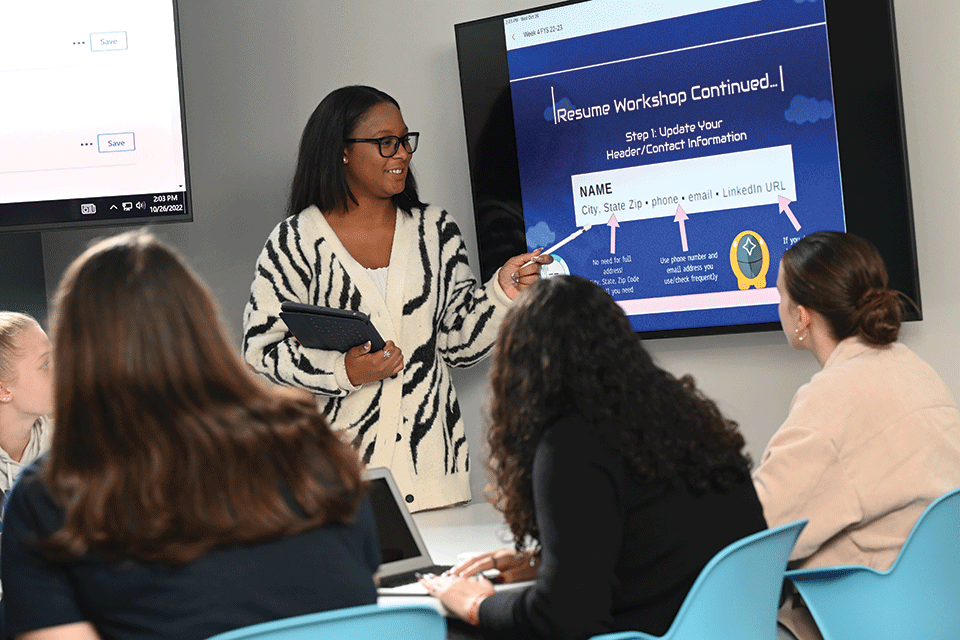ePortfolios—What are they and what are their purpose?
Have you ever wondered what an ePortfolio is and why it matters? With your electronic portfolio, you can demonstrate what you have learned during your time at St. John Fisher University, creating a living document you can share with potential employers.
“The ePortfolio is designed to help you tell your story. As you reflect on what you’ve learned in your Fisher career, the ePortfolio serves as an archive of your work,” said Dr. Melissa Goodwin, associate dean of the School of Arts and Sciences. “As you get ready to graduate, you can use this work, from reflections to the essays and projects that represent your best work, to build your LinkedIn profile, create cover letters for your job applications, and write your personal essays for graduate programs. More than that, the ePortfolio is a place to reflect on your experiences and see how it all ties together to show how much you have grown as a learner.”
What Do You Put in the ePortfolio?
Not only will you talk about your progress, but you also need to include examples. All of Fisher’s classes, especially the Core Curriculum, are based around helping you with the Fisher outcomes: written, oral, and visual communication; inquiry and analysis; integrative and applied learning; ethical reasoning; collaboration and leadership; citizenship and civic engagement; diversity, equity, and inclusion; content and discourse of field; professionalism; and career and self-development.
Most of the time, your instructors will include in the syllabus which outcomes the class will address. If they are not listed, you should ask your instructor, or decide which outcomes you personally believe the class helped you develop the most. All Core Curriculum classes should be included in your ePortfolio, but you should also talk about the classes you took for your major and minor. You can make each entry as lengthy as you need to fully discuss what you have learned as long as it is at least one standard-sized paragraph.
The more detailed your ePortfolio is, the more likely it is to stand out. If you want your ePortfolio to stand out even further then take Dean Ann Marie Fallon’s advice and avoid being generic by personalizing it. Your ePortfolio should reflect who you are as an individual such as your personality and values. The way to achieve this is by being genuine with your responses and creative with all other aspects of your ePortfolio.
Who is it for?
When you are filling out your ePortfolio, you should think of your audience as your future self. However, your ePortfolio will still be seen by faculty members so it should be professional and appropriate. You should also consider future employers since this is the same information you will include in your résumé, cover letters, and LinkedIn profile.
How do I Get Started?
If you have not made one already, you should use this opportunity to begin your ePortfolio now. Take advantage of the time you have at Fisher and fill it out as you go. Waiting to fill it out until right before graduation makes it much harder to recall your courses and what you learned. Doing this prevents you from properly showing how you have grown as a person and as a student while at Fisher.
You can create an ePortfolio by logging in to your Fisher Network account and opening the Google Sites webpage. Under “Start a new site,” select the ePortfolio template and it will create one automatically. Then fill in your information including name, major, minor, and graduation year. You also have space to talk about your extracurricular activities and career opportunities such as internships while at Fisher. As long as your information is visible and you follow the required prompts to reflect on Fisher's outcomes, you are free to change the rest of your ePortfolio to your liking.
The DePeters Center for Innovation and Teaching Excellence has more detailed instructions on creating an ePortfolio. You can also ask your instructors for help or email Dr. Goodwin at mgoodwin@sjf.edu.
